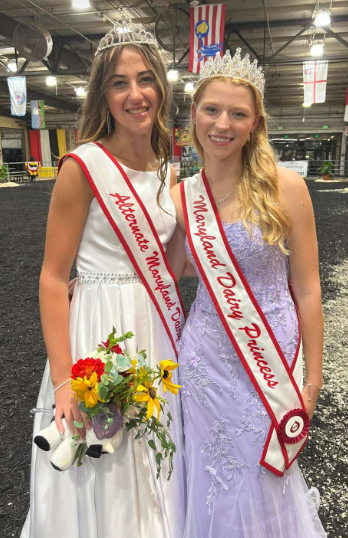Marine science classes take day trip; Students share adventures of Chesapeake Bay outing
May 9, 2023
On April 19 and 20, the marine science classes at North Harford attended a field trip to the Chesapeake Bay in Havre de Grace. The field trip was a “hands on experience,” according to the students who attended.
The marine science students were given the opportunity to actively participate in learning about the marine environment. Sophomore Jenna Roh shared that a main takeaway of the school trip was “how the bay is being affected by humans, and how humans are affecting the wildlife and water chemistry of the bay.”
The students were driven out into the bay and the Susquehanna River on a boat, named the Snow Goose. Once they reached their destination in the water, the boat came to a halt and the students began their learning experience.
Sophomore Ann Warren explained that during the field trip, they were allowed to test many things, such as “water quality,” and also were able to do some fishing as well.
Warren shared that when the students began water testing, they were instructed to find and figure out nitrate amounts current in the bay and river waters. They also used maps to “see where water came from the areas, and to see how [the whereabouts of the waters] can impact the bay’s health.”
Warren added that her favorite part of the trip was the nitrate testing. “We got to shake a couple of chemicals around in water [from the bay] to see how much nitrate was in it, and there actually wasn’t a lot – which is a pretty good thing for the bay.” The sophomore also added that it was “interesting to learn about what different species that could be found [in the bay,] and also about the bioindicators of water health.”
Roh, who also attended the science trip, shared that the students and workers working on the boat focused “a lot on nutrient pollution and eutrophication in the water.” The marine science student said that a lot of the pollution comes from “runoff fertilizers, farms, and animal waste.”
During the fishing part of the outing, the students both explained that themselves, and the others they were with, caught mostly catfish. “We caught a massive catfish with one eye- and we learned that that was actually normal because fish are very touch and go. It’s easier for one fish to take out another’s eye and scram,” Warren explained.
Both of the students agreed that the trip was “overall really fun to learn a lot of these things- especially when you’re out on the water.”
















